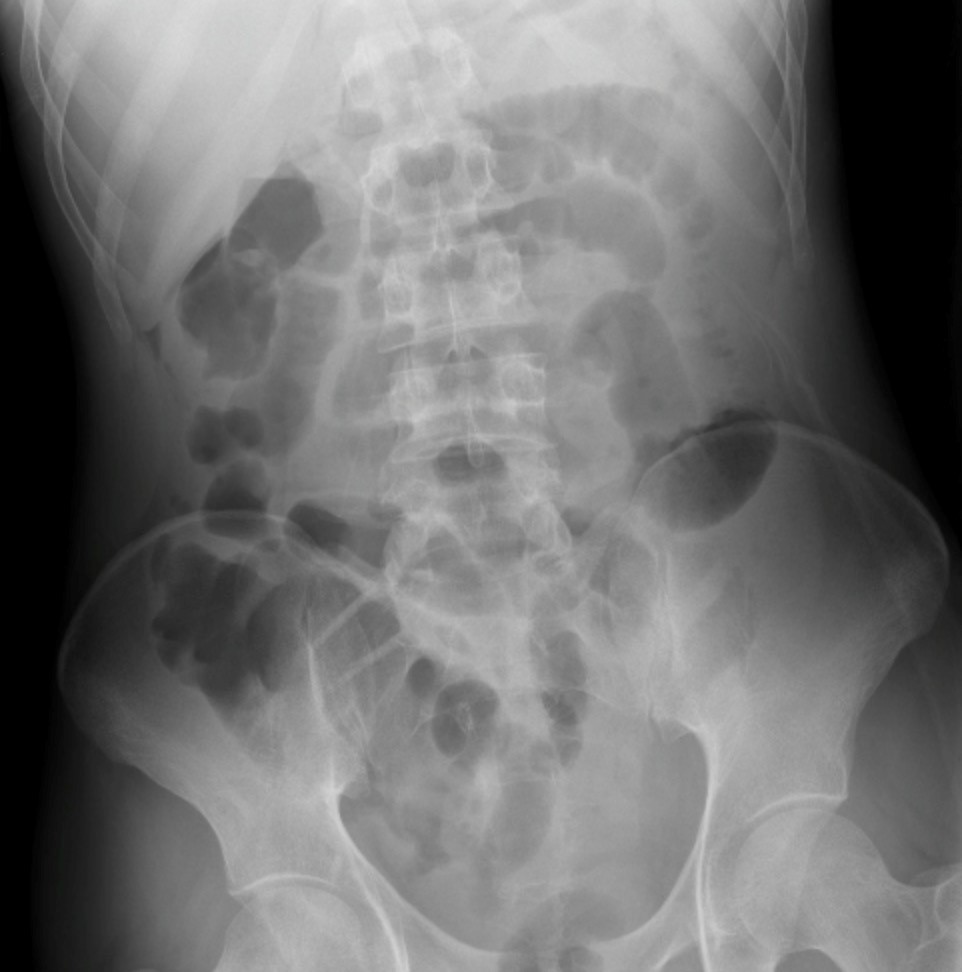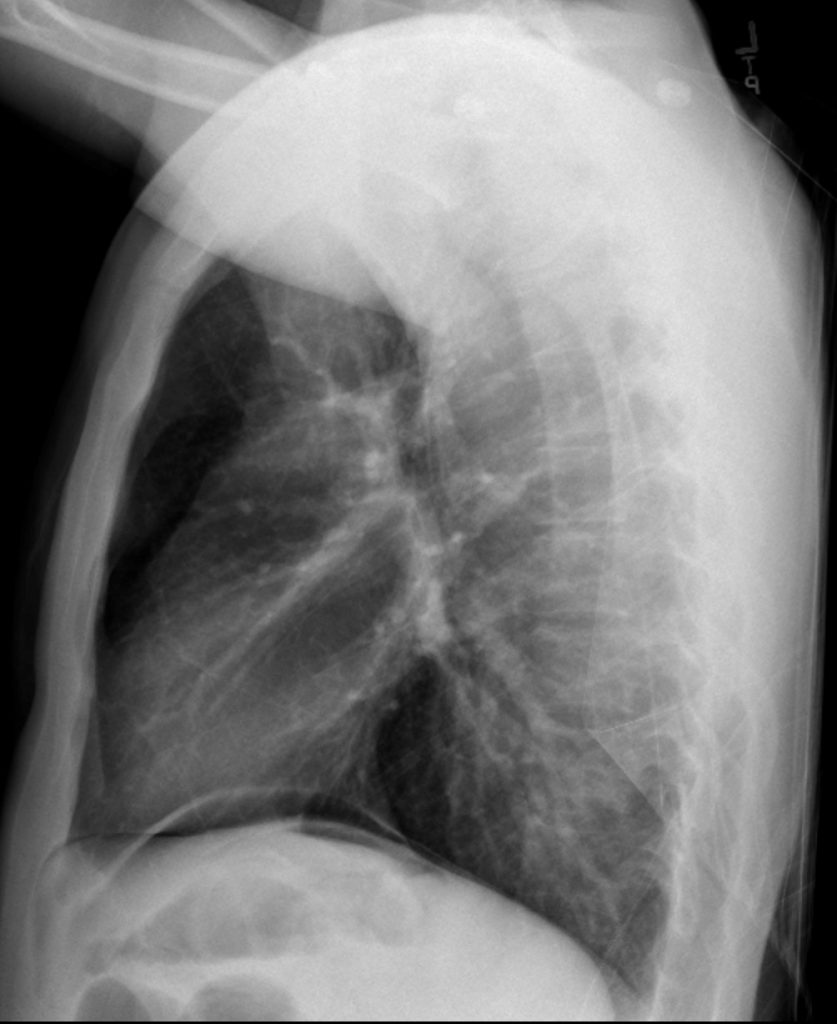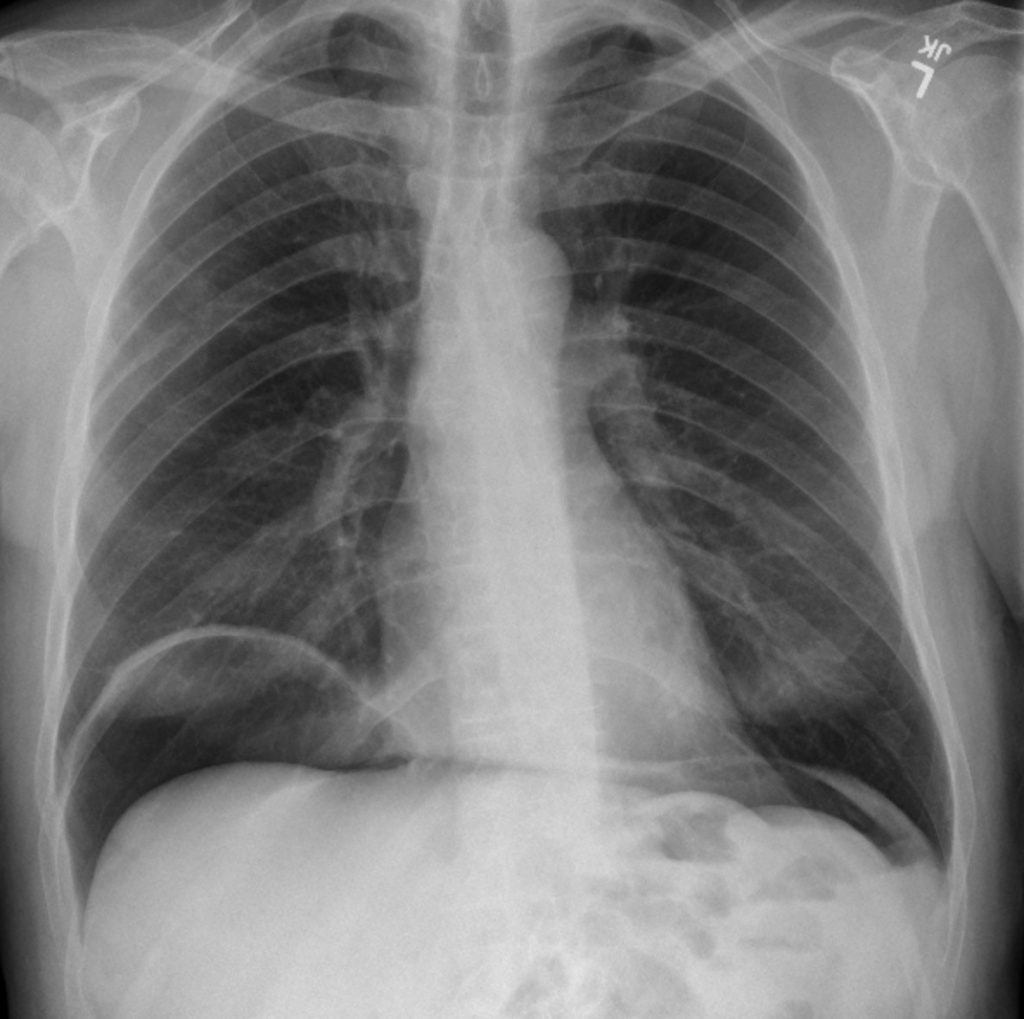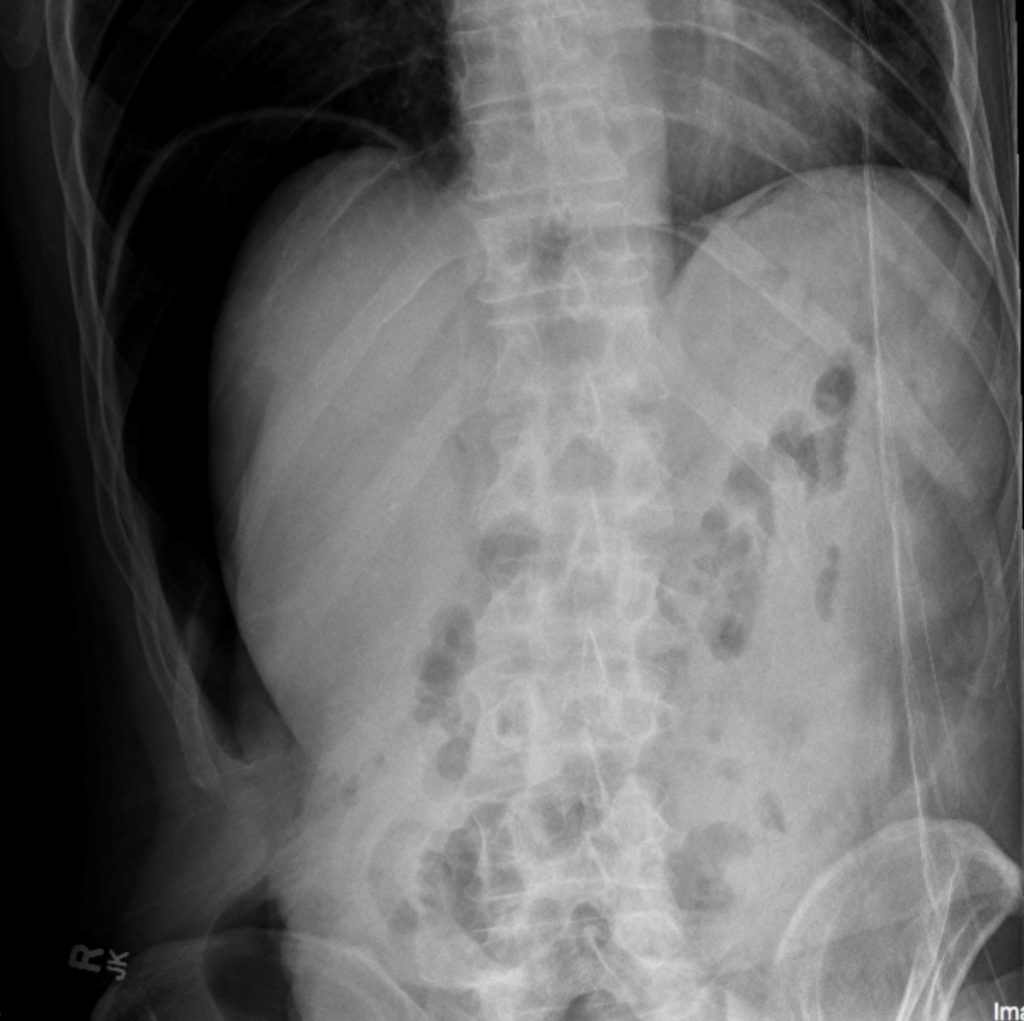Chapter 10 – Gastrointestinal and Abdominal
Intestinal Perforation- Pneumoperitoneum
Case 1
Pneumoperitoneum
Clinical:
History – This patient was stabbed in the abdomen outside the neighbourhood bar.
Symptoms – Pain associated with a knife wound in the left lower abdomen.
Physical – A single linear, puncture wound was seen in the left lower abdomen. No active bleeding. Hemodynamically stable. No other findings.
DDx:
Abdominal Wall Laceration
Perforated Viscus
Solid Organ Laceration
Imaging Recommendation
Trauma Imaging
Chest x-ray
Abdominal x-ray


Imaging Assessment
Findings:
Abdominal x-ray – There was a positive Rigler sign in in the right upper quadrant. No other findings.
Chest x-ray – Pneumoperitoneum was seen beneath the hemidiaphragms.
Interpretation:
Probable perforated hollow viscus.
Diagnosis:
Pneumoperitoneum. Perforated hollow viscus.
Discussion:
Causes for pneumoperitoneum:
- Perforated hollow viscus
- Recent surgery
- Recent drainage procedure – needle aspiration or drainage tube insertion
- Gas forming organism in peritoneal fluid
- Vaginal route
- Inflammatory bowel disease
- Pneumothorax
- Mechanical ventilation
- Peritoneal dialysis
X-ray findings may include:
There are three major signs of free intraperitoneal gas, arranged below in the order in which they are most commonly seen:
- Air beneath the diaphragm
- Visualization of both sides of the bowel wall (Rigler Sign)
- Visualization of the falciform ligament
Air Beneath the Diaphragm ·
- Gas will rise to the highest part of the abdomen.
- In the upright position, free gas will usually reveal itself under the diaphragm as a crescentic lucency that parallels the under surface of the diaphragm.
- The size of the crescent will be roughly proportional to the amount of free gas.
Visualization of both sides of the bowel wall
- On the normal abdominal radiograph, we visualize air only inside the lumen of the bowel, not outside the bowel wall. This is because the bowel wall is soft tissue density and is surrounded by tissue of the same density.
- The introduction of gas into the peritoneal cavity enables us to visualize the wall of the bowel itself since the wall is now surrounded on both inside and outside by gas (Rigler sign).
Visualization of the falciform ligament
- The falciform ligament courses over the free edge of the liver anteriorly. It contains a remnant of the obliterated umbilical artery. It is normally invisible, composed of soft tissue and surrounded by tissue of similar density.
- When free gas is present and the patient is in the supine position, the free gas may rise over the anterior surface of the liver, surround the falciform ligament, and render it visible.
Case 2
Large Pneumoperitoneum
Clinical:
History – This patient was just discharged two days previously after laparoscopic appendectomy.
Symptoms – Generalized abdominal pain and bloating.
Physical – The patient’s abdomen was distended and tympanitic. He had mild peritoneal irritation. He was hemodynamically stable. He had a mild fever of 38.5C. No other findings.
DDx:
Post-operative adynamic ileus
Perforated Viscus
Dehiscence of the appendectomy stump
Bowel obstruction
Imaging Recommendation
Chest x-ray
Abdominal x-ray


Imaging Assessment
Findings:
Chest x-ray – Pneumoperitoneum was seen beneath the hemidiaphragms.
Abdominal x-ray – Massived pneumperitoneum was seen. No evidence of bowel obstruction or ileus. No evidence of post-operative abscess. No other findings.
Interpretation:
Probable dehiscence of the appendectomy stump.
Diagnosis:
Pneumoperitoneum, dehiscence of appendectomy closure.
Attributions
Figure 10.2A Abdominal x-ray displaying possible perforated viscus, Rigler’s sign in right upper quadrant by Dr. Brent Burbridge MD, FRCPC, University Medical Imaging Consultants, College of Medicine, University of Saskatchewan is used under a CC-BY-NC-SA 4.0 license.
Figure 10.2B Lateral chest x-ray displaying possible perforated viscus, sub-diaphragmatic free gas by Dr. Brent Burbridge MD, FRCPC, University Medical Imaging Consultants, College of Medicine, University of Saskatchewan is used under a CC-BY-NC-SA 4.0 license.
Figure 10.3A Chest x-ray displaying massive pneumoperitoneum by Dr. Brent Burbridge MD, FRCPC, University Medical Imaging Consultants, College of Medicine, University of Saskatchewan is used under a CC-BY-NC-SA 4.0 license.
Figure 10.3B Decubitus Abdominal x-ray displaying massive pneumoperitoneum by Dr. Brent Burbridge MD, FRCPC, University Medical Imaging Consultants, College of Medicine, University of Saskatchewan is used under a CC-BY-NC-SA 4.0 license.

